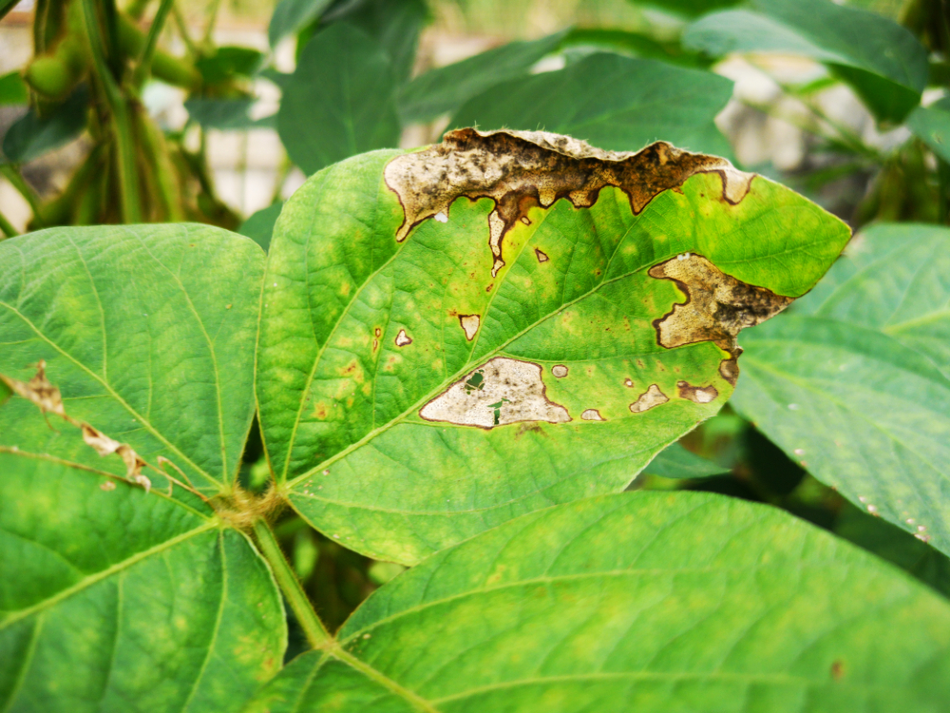
Image Credit: The natures/Shutterstock.com
Biotic and abiotic stress lead to a decrease in agricultural production worldwide. The global rise in the human population has enhanced the need for qualitative and quantitative improvement in crop productivity. Scientists believe that the loss of agricultural products can be minimized by adopting modern technology, such as smartphones via nanosensors, to detect plant stress at an early stage.
Plant Responses to Biotic and Abiotic Stresses
Biotic stress occurs due to the infection caused by pathogenic microbes (bacteria, fungi, and viruses).
Abiotic stress includes salinity, extreme temperature, drought, flood, presence of heavy metal, and other nutritional deficiencies.
Both biotic and abiotic stress leads to a massive loss in agricultural production. When a plant is exposed to such stresses, its defense mechanism is automatically activated by signaling molecules. These signaling molecules regulate plant responses by releasing Ca2+, NO, phytohormones (abscisic acid, salicylic acid, ethylene), and reactive oxygen species (ROS) (for example, H2O2).
Real-Time Detection of Plant Stress Using Smart Technology
Physical traits of plants are primarily studied through various tools such as spectroscopy, fluorescence, and imaging from the visible to the infrared spectrum of light.
Several remote-sensing techniques have helped gather essential data regarding plant health. This data system accumulates information about chlorophyll content and fluorescence, the surface area of leaves, stomatal conductance, leaf temperature, and transpiration rate. However, this type of information is not always enough to determine plant stress at its early stages.
With the help of nanosensors, plant stress such as biotic, abiotic, and nutritional deficiency, are monitored using various electronic devices, including smartphones.
Click here to find out more about nanosensors.
For real-time plant health monitoring, nanosensors convert the chemical signals of the plant into digital information for electronic devices such as smartphones and cameras. This technology is highly beneficial for detecting the onset of biotic and abiotic stress at an early stage.
Plants equipped with single-wall carbon nanotubes (SWCNT) sensors communicate various stress conditions such as the presence of explosive nitroaromatics compounds and groundwater analytes through nIR optical signals. These signals can be programmed to trigger e-mails and text messages on a smartphone.
Researchers at the Massachusetts Institute of Technology (MIT) have successfully developed a method to determine plant responses to various stresses such as pathogenic infection, injury, and damage caused by light.
The scientists inserted nanosensors made up of carbon nanotubes within the plant leaves. The embedded nanosensors determined the presence of signaling molecules such as hydrogen peroxide, and, in response to stress, hydrogen peroxide acted as a signaling molecule in plants.
Click here to find out more about nano-sized sensors.
When a plant leaf is wounded, i.e., the plant is under a stressed condition, it releases hydrogen peroxide from the injured site. Hydrogen peroxide molecules then generate a wave that covers the entire leaf in a similar manner in which neurons send electrical impulses to the brain cells.
The release of hydrogen peroxide in the plant cell (injured site) promotes the prompt release of calcium in the adjacent cells, stimulating the further release of hydrogen peroxide from the neighboring cells.
This initiates the production of secondary metabolites such as phenol, flavonoid and carotenoids that are involved in plant repair mechanisms.
Several secondary metabolites can fend off predators, while the plant produces several secondary metabolites under stress conditions. These secondary metabolites have wide-ranging applications, including pharmaceutical benefits, food flavors, and antimicrobial properties.
The carbon nanotube sensor developed by MIT engineers uses hydrogen peroxide signals to identify different types of stress.
The nanosensor is inserted into the plant leaves using the lipid exchange envelope penetration (LEEP) method. This method allows the nanosensor to penetrate within the plant cell membranes and evaluate the dissimilarities of different species’ responses to stress.
It was found to be effective in eight different crop plants, including strawberry, spinach, and arugula. The team at MIT believe that their sensor could also work efficiently in other plant species.
The Advantages of a Nanosensors in Plant Health Applications
The main advantage of this sensor is to assess plants’ health conditions in real-time.
The evaluation of a plant’s response to different types of stress is highly beneficial to agricultural researchers and helps them develop new techniques to enhance plant growth and its yield.
This technique is rapid and can analyze various plant species at a time. It also enables the agricultural scientist to evaluate real-time plant responses in any new environment. The accurate assessment of plant health conditions across hundreds of hectares of crops is extremely beneficial.
Conclusion
This real-time crop monitoring technology ensures high agricultural produce with the precise use of costly agrochemicals. It also helps minimize the loss of limited resources, such as water or nutrients. Therefore, the advancement in nanotechnology helps reduce the impact of biotic and abiotic stress on agricultural produce and enhances the optimal use of limited resources.
References and Further Reading
Massachusetts Institute of Technology. (2020). Nanosensor can alert a smartphone when plants are stressed: Carbon nanotubes embedded in leaves detect chemical signals that are produced when a plant is damaged. ScienceDaily. Available at: https://www.sciencedaily.com/releases/2020/04/200415133512.htm
Giraldo, J.P., Wu, H., Newkirk, G.M. et al. (2019). Nanobiotechnology approaches for engineering smart plant sensors. Nature Nanotechnology. 14, 541–553. https://doi.org/10.1038/s41565-019-0470-6
Disclaimer: The views expressed here are those of the author expressed in their private capacity and do not necessarily represent the views of AZoM.com Limited T/A AZoNetwork the owner and operator of this website. This disclaimer forms part of the Terms and conditions of use of this website.